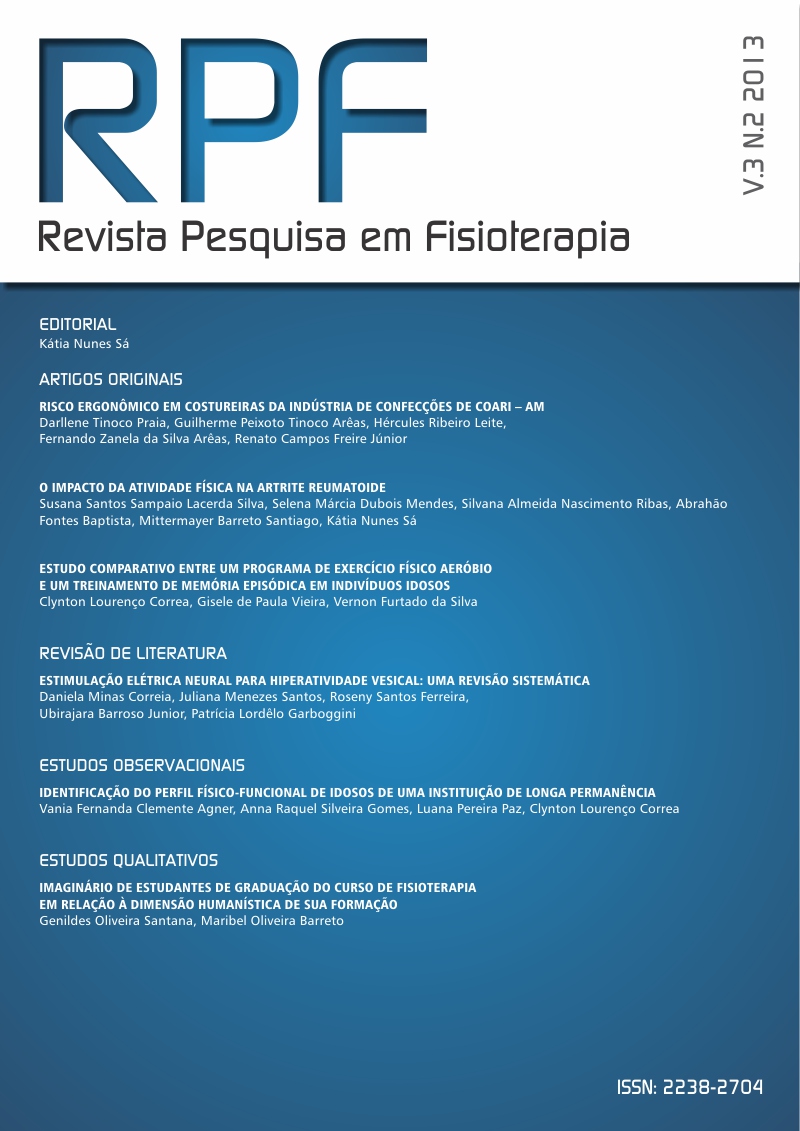ELECTRICAL NEURAL STIMULATION FOR OVERACTIVE BLADDER: SYSTEMATIC REVIEW
DOI:
https://doi.org/10.17267/2238-2704rpf.v3i2.277Keywords:
Electrical stimulation, Overactive bladder, Voiding dysfunctionAbstract
Objective: To review studies that used electrical stimulation in the treatment of overactive bladder in childhood. Methodology: This is a systematic review. Articles were searched in Medline and Cochrane library search (January 1990 to March 2010), the following criteria: 1) participants aged 0-17 years, 2) participants with a diagnosis of type DTUI hyperactivity bladder, not related to congenital abnormalities or neurological diseases, 3) English language, 4) treatment by the EEN. Results: We found 11 items. The articles found were related to posterior tibial percutaneous electrical stimulation, TENS parasacral and associated with suprapubic, and devices and endoanal acuminata, is a randomized study. The studies showed rates of resolution, ranging from 31 to 80% for overactive bladder, 25-84% and 13-84% for symptoms of urgency and incontinence, respectively. Recurrence of bladder hyperactivity ranged from 10 to 25%. Conclusion: This study showed that the literature in the area of interest, is sparse and the evidence for the efficacy of neural electrical stimulation in urinary tract dysfunction in children is a difficult conclusion.



